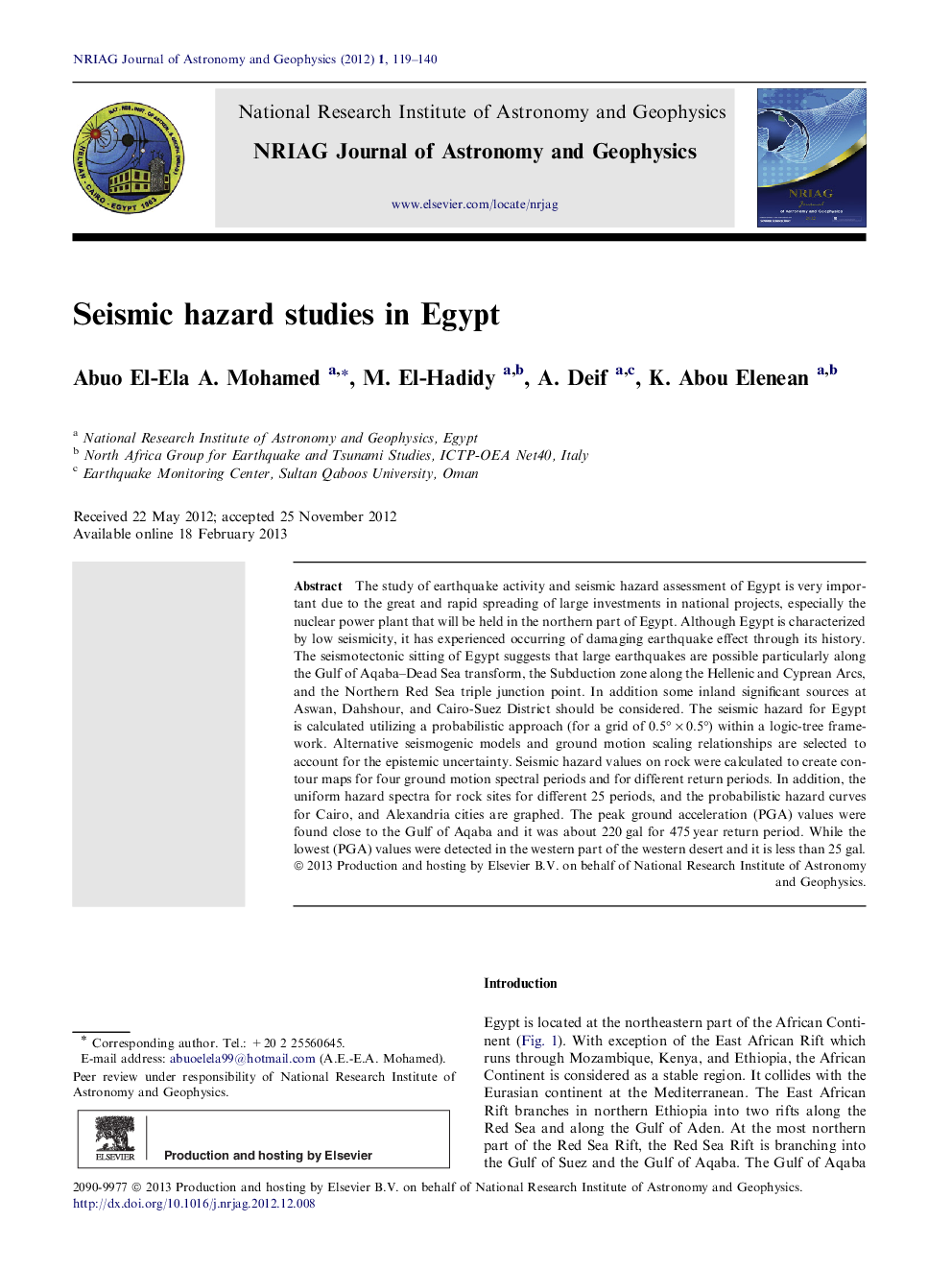| Article ID | Journal | Published Year | Pages | File Type |
|---|---|---|---|---|
| 1780671 | NRIAG Journal of Astronomy and Geophysics | 2012 | 22 Pages |
Abstract
The study of earthquake activity and seismic hazard assessment of Egypt is very important due to the great and rapid spreading of large investments in national projects, especially the nuclear power plant that will be held in the northern part of Egypt. Although Egypt is characterized by low seismicity, it has experienced occurring of damaging earthquake effect through its history. The seismotectonic sitting of Egypt suggests that large earthquakes are possible particularly along the Gulf of Aqaba-Dead Sea transform, the Subduction zone along the Hellenic and Cyprean Arcs, and the Northern Red Sea triple junction point. In addition some inland significant sources at Aswan, Dahshour, and Cairo-Suez District should be considered. The seismic hazard for Egypt is calculated utilizing a probabilistic approach (for a grid of 0.5° Ã 0.5°) within a logic-tree framework. Alternative seismogenic models and ground motion scaling relationships are selected to account for the epistemic uncertainty. Seismic hazard values on rock were calculated to create contour maps for four ground motion spectral periods and for different return periods. In addition, the uniform hazard spectra for rock sites for different 25 periods, and the probabilistic hazard curves for Cairo, and Alexandria cities are graphed. The peak ground acceleration (PGA) values were found close to the Gulf of Aqaba and it was about 220 gal for 475 year return period. While the lowest (PGA) values were detected in the western part of the western desert and it is less than 25 gal.
Related Topics
Physical Sciences and Engineering
Physics and Astronomy
Astronomy and Astrophysics
Authors
Abuo El-Ela A. Mohamed, M. El-Hadidy, A. Deif, K. Abou Elenean,
